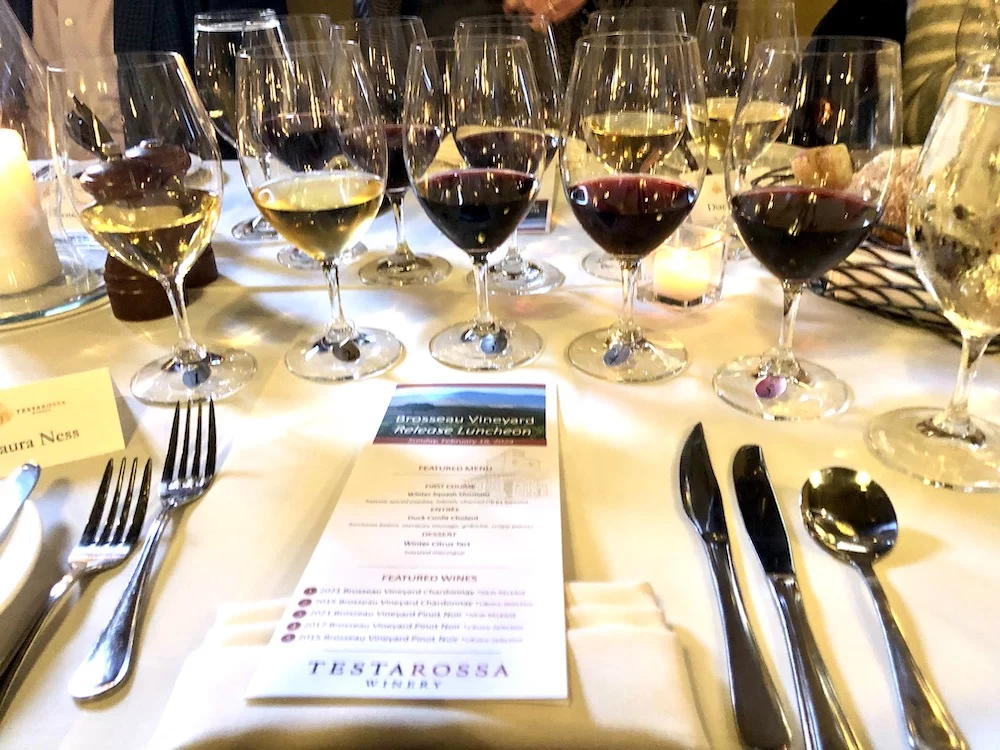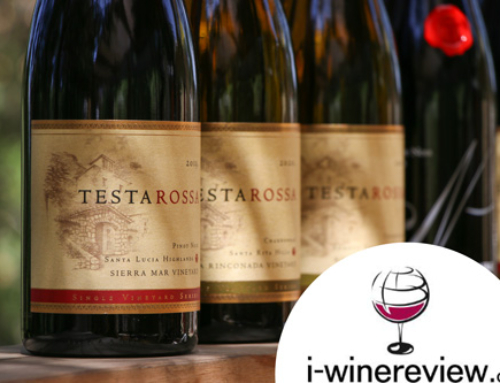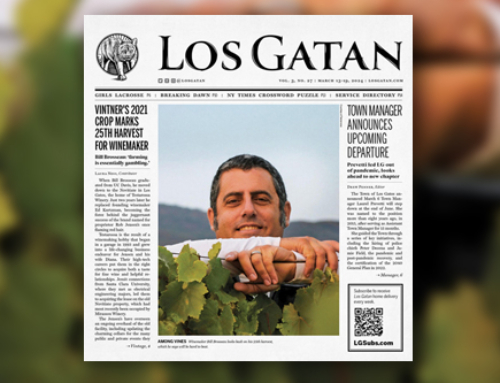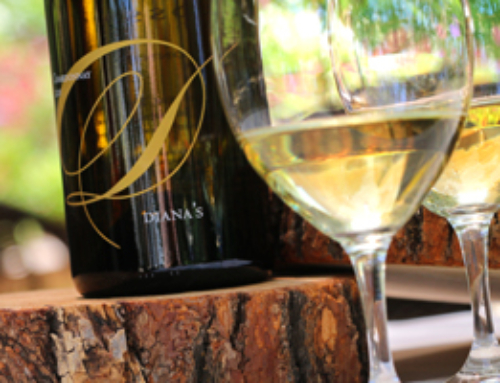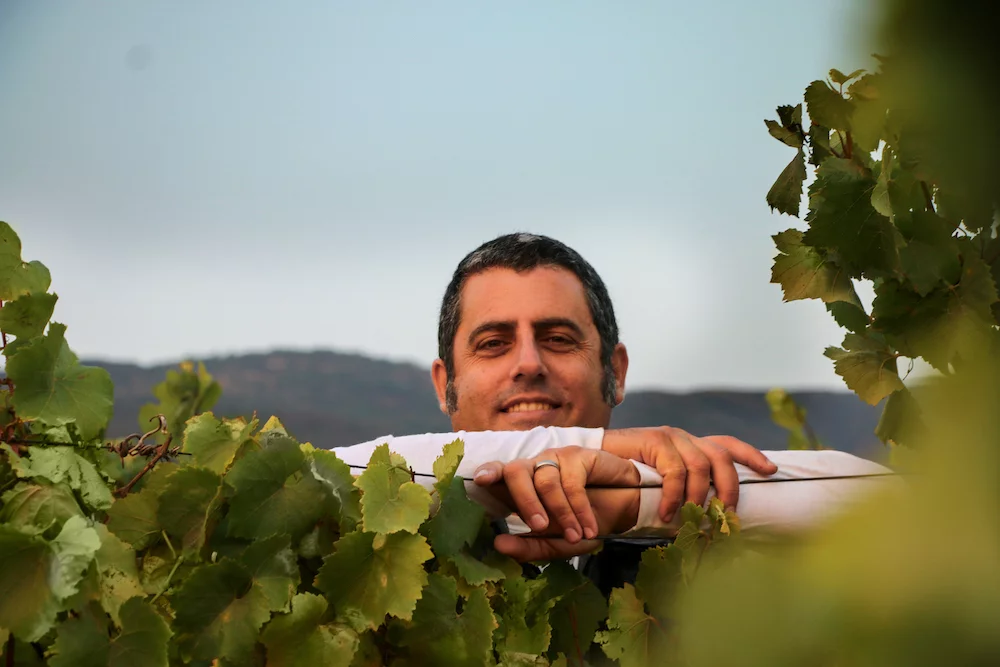
Testarossa winemaker Bill Brosseau in the vineyard (Photo: Olena Kovtash)
February 23, 2024 – When Testarossa releases new wines from one of its prized vineyard sources, it’s a big deal, occasionally accompanied by a formal luncheon, complete with current and older releases from that vineyard. Such was the occasion this past Sunday as chef Nadiv Geiger presented three excellent courses that complimented the wines from Brosseau Vineyard—a source of fruit for Testarossa since winemaker Bill Brosseau came to Testarossa in 2000, taking over the reins from founding winemaker Ed Kurztman in 2003.
From the outset, having fruit from the Chalone AVA in eastern Monterey County added something entirely unique and distinctive to the vineyard portfolio of the young winery.
Testarossa proprietor Rob Jensen, in his welcome address to the crowd at the Brosseau release luncheon, praised the unique minerality and intensity of Chalone.
“Whenever we have visitors from Europe, and especially from France, they always prefer the wines from Brosseau Vineyard. The Chardonnays, with their obvious limestone, remind them of Chablis.”
The Brosseau Vineyard is located in the eastern part of Monterey County and was acquired by Bill’s parents, Jon and Jan Brosseau, in the mid 1970’s. His father, a Lockheed engineer, insisted on farming, and planted his first grapes in 1980.
“My Dad had lots of patience and time, but not much money,” he says. The first piece of land his parents acquired, off the desolate stretch of road near the Pinnacles, was seized by the government by eminent domain.
This turned out to be a stellar fortune in a broken cookie. The parcel they were given in its stead turned out to be money: it had limestone and a little ground water. Although Bill’s Dad had to truck water in to keep the young vines alive, they were able to get water and electricity in the 1990s courtesy of neighboring Chalone Vineyard. In fact, you can stay right in the Brosseau Vineyard at the Inn at the Pinnacles, in one of six luxury suites that Jan and Jon built for guests to enjoy.
Brosseau grew up dirt biking around the vineyard on weekends (he and his parents lived in Los Altos, and the vineyard near the Pinnacles was their getaway) and eventually graduated to bulldozers and tractors, while helping his parents manage the property. After earning his degree in viticulture and enology from UC Davis in 2000, he went to work at Testarossa as an enologist and has been there since. He also makes wines under the Brosseau Wines label.
The 43 acres of vines at Brosseau Vineyard include Chardonnay, Pinot Noir, Grenache and Syrah, and have been farmed organically since 2011.
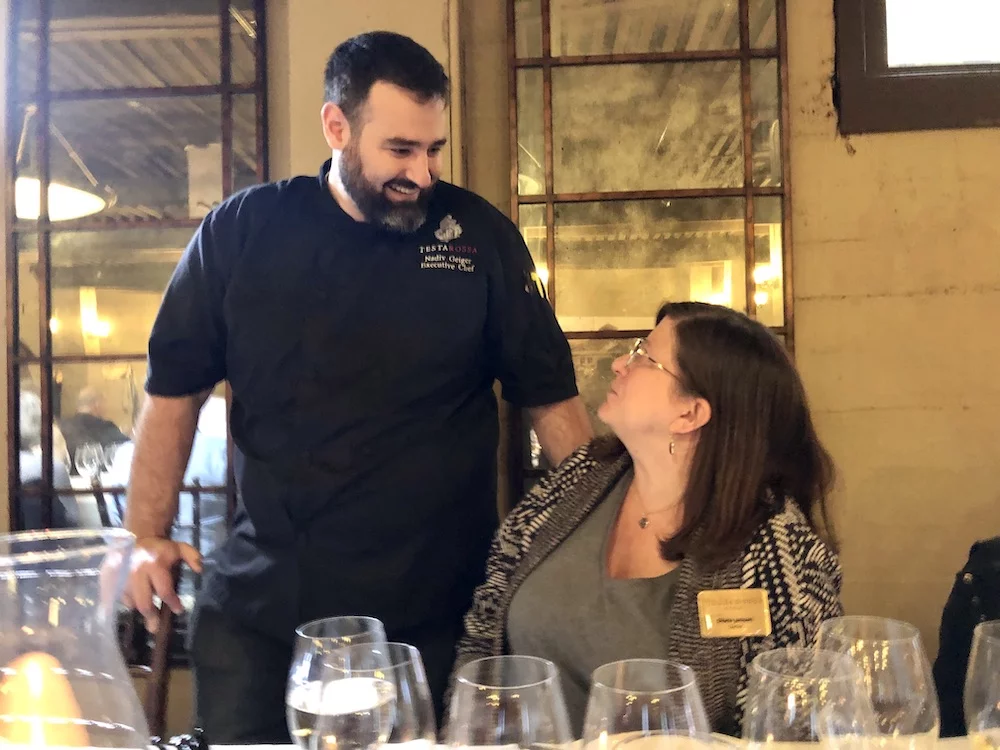
Chef Nadiv Geiger and Testarossa co-proprietor Diana Jensen (Photo: Laura Ness)
The 2021 vintage marked Brosseau’s 25th harvest, and the grapes were the first to arrive on the Testarossa crush pad that year. Both the 2021 Brosseau Vineyard Chardonnay and Pinot Noir exhibit plenty of aging potential, marked by tense horsepower, waiting to unfold, especially the Pinot Noir.
The 2021 Chardonnay is bristling with vivid lemon curd, stone, baked apple, lime pith and intense minerality, each sip giving you more, like a horse warming up to its racing gait. This one won’t peak for decades. It was a righteous accompaniment to the winter squash sformato, chef Geiger’s riff on an Italian butternut squash custard, served with spiced pepitas, lebneh, roasted winter squash slices and bedecked with charred citrus espuma. An exquisitely winter dish, for a day that turned from sunshine to pommeling rain.
If the 2015 Chardonnay—also served at the luncheon, and positively electric with the winter citrus tart dessert, topped with baked meringue and candied orange peel—is any indication, the 2021 is a keeper. With 9 years of aging, the 2015 was super smooth, its taffeta-crisp acid now smoothed to a sheen around the edges, offering up generous flavors of peach cobbler and carrot cake: an utterly divine mouthful of wine.
The annual luncheon is held to introduce new releases from Brosseau Vineyard. (Photo: Laura Ness)
“I like the holistic view of every growing season having an impact,” says Brosseau. “To have the right conditions to make wines that can go the distance is rewarding. The 2001 and 2002 wines from Brosseau Vineyard are still hanging in there!”
To be honest, the 2021 Brosseau Pinot Noir wants decanting now, with its tightly closed nose, and youthful reluctance to have a conversation. It’s going to be a bon vivant in four to five years, though, as its beckoning core of cranberry, wild plum and dark cherry, give way to the baked berry pie flavors lurking beneath.
With seven years of age, the 2017 Brosseau Pinot Noir is smokey and savory, with black fig, cherry balsamic and a streak of tarragon. It was sensational with the duck confit cholent, which featured duck legs brined for 24 hours in spices, salt, peppercorns and citrus peel, then slow cooked for 16 hours in duck fat, served cassoulet style over beans with merguez sausage, gribiche (hard boiled egg yolks emulsified with parsley, chervil and tarragon) and topped with crispy potato crunchies.
For those who appreciate the nuances of older wines, the 2015 Brosseau Pinot Noir was a velvety plush robe of darkness, packed with earth, bramble berry bars and baking spice, for a surprisingly elegant expression from such a dense and brooding wine.
Brosseau shared that after the bountiful crop of 2014, he was expecting the same in 2015. However, a cold wet spring, with rain at all the wrong times, turned expectations upside down. “Talk about erasing your yield curve!” said Brosseau. “The set was very light, and the berries were small, with almost no seeds. Usually, we get 3 to 5 seeds per berry, but that year, some had one seed, and some had none.” Without the seed tannins, the wine has very concentrated flavors but significantly less tannic grippiness.
Of 2021 in general, Brosseau says it is literally the best vintage he has ever seen. “I may never see one like that again.”
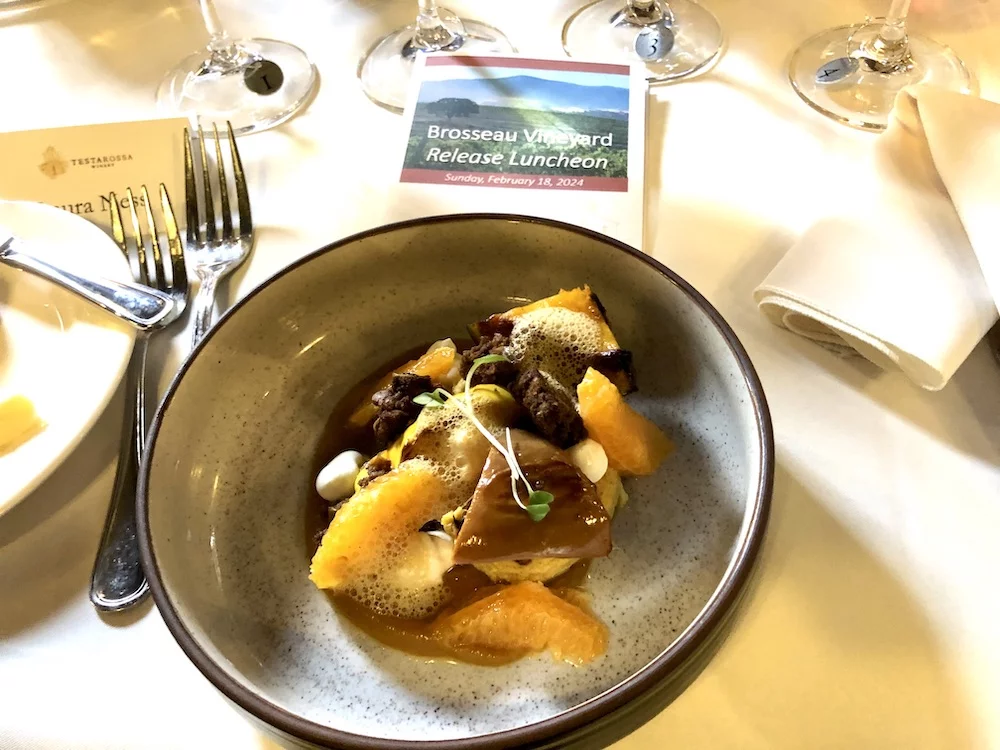
Photo: www.ediblemontereybay.com
Not that he’s wanting to make carbon copies. “There are no 3D printed wines here! We have goalposts and boundaries, but the fun part is seeing the impact of the weather. Each year, we are gambling: farming is essentially gambling. So far, it’s working. We are spoiled by the sensory overload of each vineyard.”
Do you think he loves his job? The stakes are high, but so is the payback. Every time you open a bottle, you can relive that year and what made it meaningful.
“Wine is very fleeting,” says Brosseau. “It forces you to hang on to that memory.”

